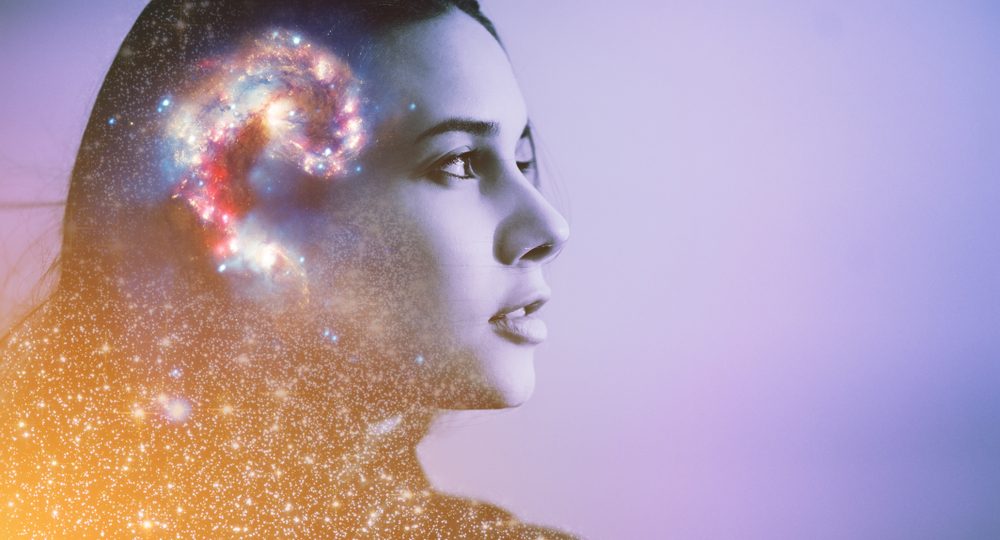DISCLAIMER: Always consult with a healthcare professional before starting any new routines, programs, or nutrition plans to ensure you receive the best medical advice and strategy for your specific individual needs.
Are you seeking to understand yourself and your place in the world? Human Design is the thing to help you out.
Human Design has been gaining popularity in recent years as more people seek a more profound knowledge of themselves and their place in the world. By exploring your Human Design type and chart, you can gain valuable insight into your unique strengths and weaknesses and how to navigate your life more clearly and intentionally.
Whether you’re looking to improve your personal relationships, find a fulfilling career, or simply better understand yourself, Human Design offers a wealth of knowledge and guidance.
This article will explore Human Design’s potential for personal growth and self-awareness. From understanding your unique Human Design type to incorporating Human Design principles into your daily life, we’ll cover everything you need to know to harness the power of Human Design.
Let’s begin.
What Exactly Is Human Design?
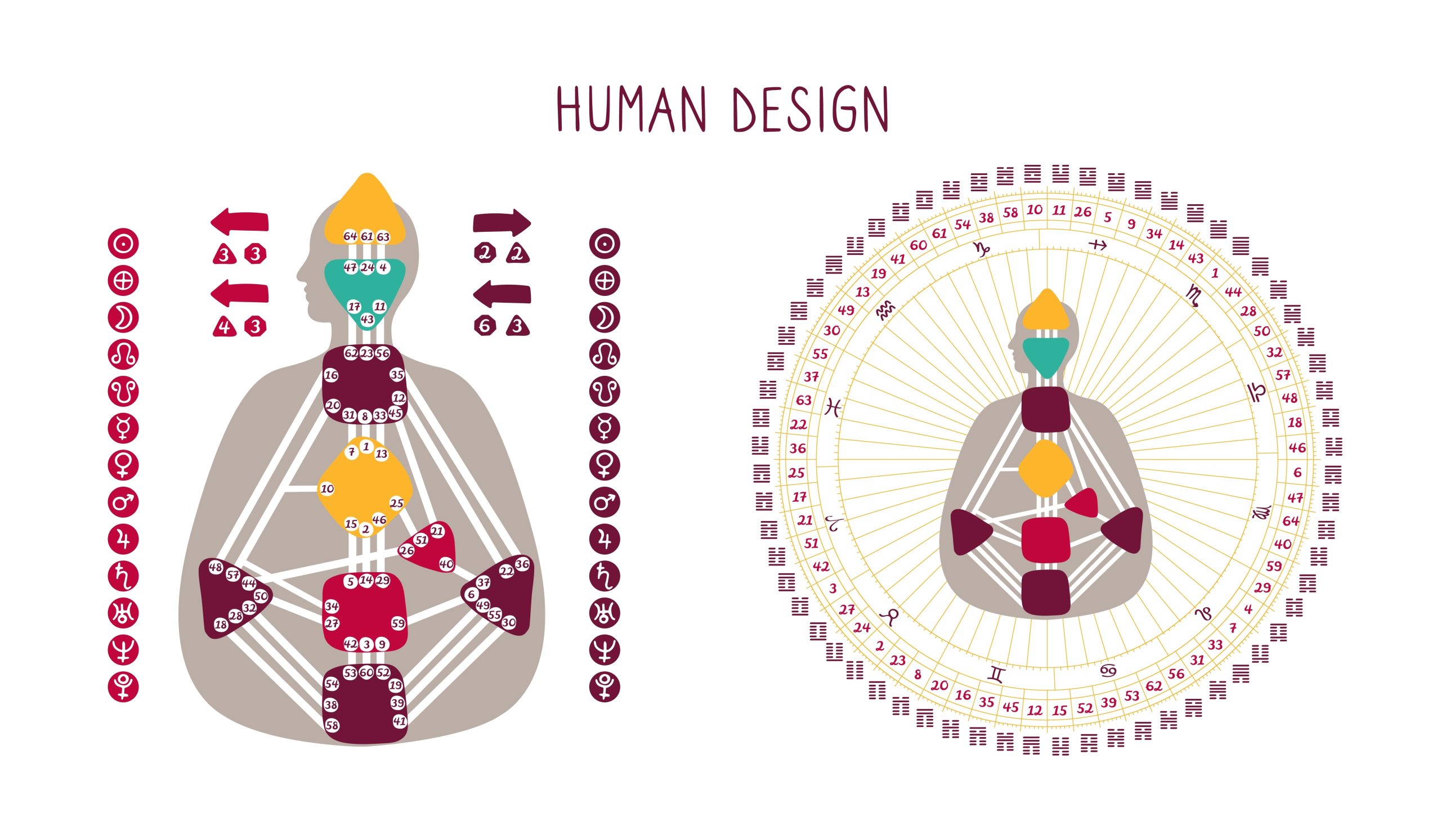
Human Design is a self-knowledge system combining elements of astrology, the I Ching, the Kabbalah, the Hindu-Brahmin chakra system, and quantum physics. It’s based on the idea that every person is born with a unique energetic blueprint that determines their personality traits, strengths, weaknesses, and life purpose.
The approach was developed in the 1980s by Robert Alan Krakower, who later changed his name to Ra Uru Hu.
At its core, Human Design teaches us that every individual is born with a specific energy blueprint, which determines our unique traits, strengths, and weaknesses. The blueprint is what makes up the Human Design system.
The Human Design System
The Human Design system uses a chart known as the BodyGraph, which shows the position of the planets and other celestial bodies at the time of a person’s birth and the part of the 64 hexagrams of the I Ching. The information in the body graph determines a person’s Human Design type. Each type has its own unique characteristics and strategies for living in alignment with its design.
Along with the body graph, the Human Design system also includes centers, channels, and gates corresponding to different aspects of a person’s life, such as emotions, relationships, and careers.
By understanding your Human Design, you gain insight into your natural strengths and challenges and learn how to make decisions and navigate your life in an authentic and fulfilling way.
One of the foundational aspects of Human Design is the concept of type, which categorizes individuals into four distinct groups.
Here’s more on the Human Design types.
What Are the Human Design Types?
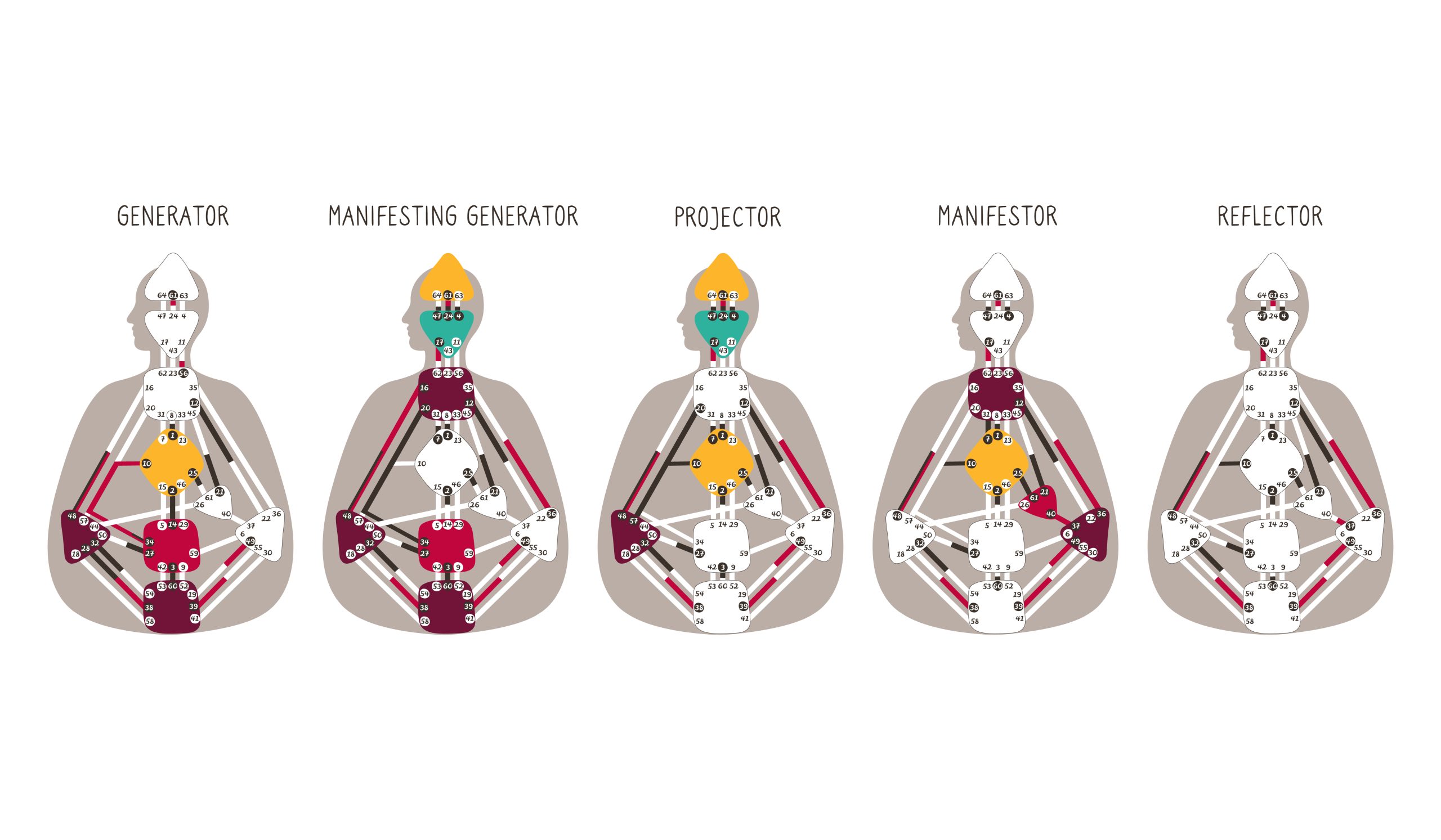 Human Design types classify people into four types, each with its characteristics, strategies, and purposes in life.
Human Design types classify people into four types, each with its characteristics, strategies, and purposes in life.
Here is a brief overview of each of them:
Manifestor
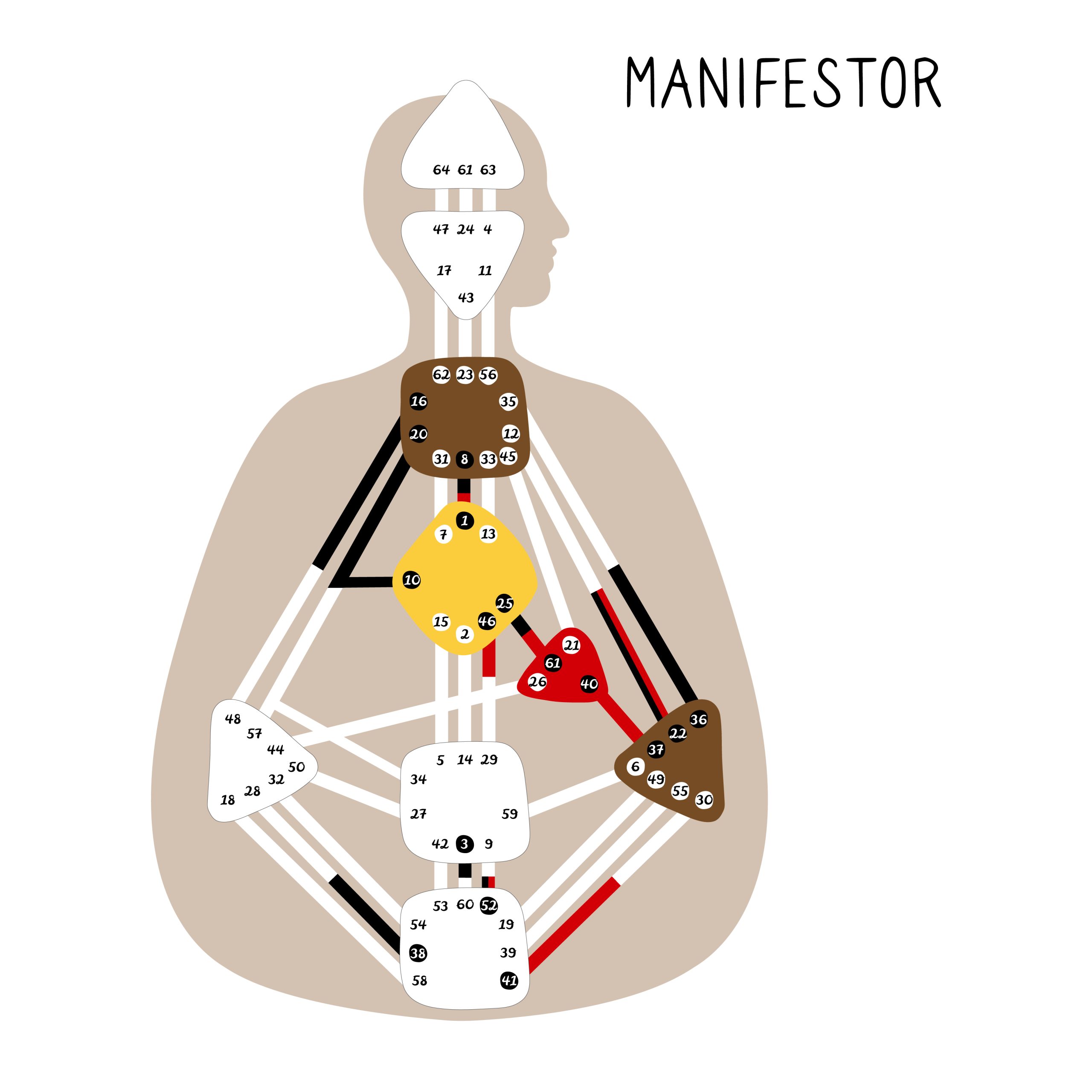 The manifestors are natural initiators full of the energy to make things happen. Manifestors are here to bring new ideas and concepts into the world and often have a strong urge to create and innovate. They have a sense of purpose and a need for independence.
The manifestors are natural initiators full of the energy to make things happen. Manifestors are here to bring new ideas and concepts into the world and often have a strong urge to create and innovate. They have a sense of purpose and a need for independence.
Manifestors’ sense of autonomy may sometimes leave them limited or frustrated by external expectations or restrictions. These people act quickly and make things happen without needing permission or recognition from others.
Generator
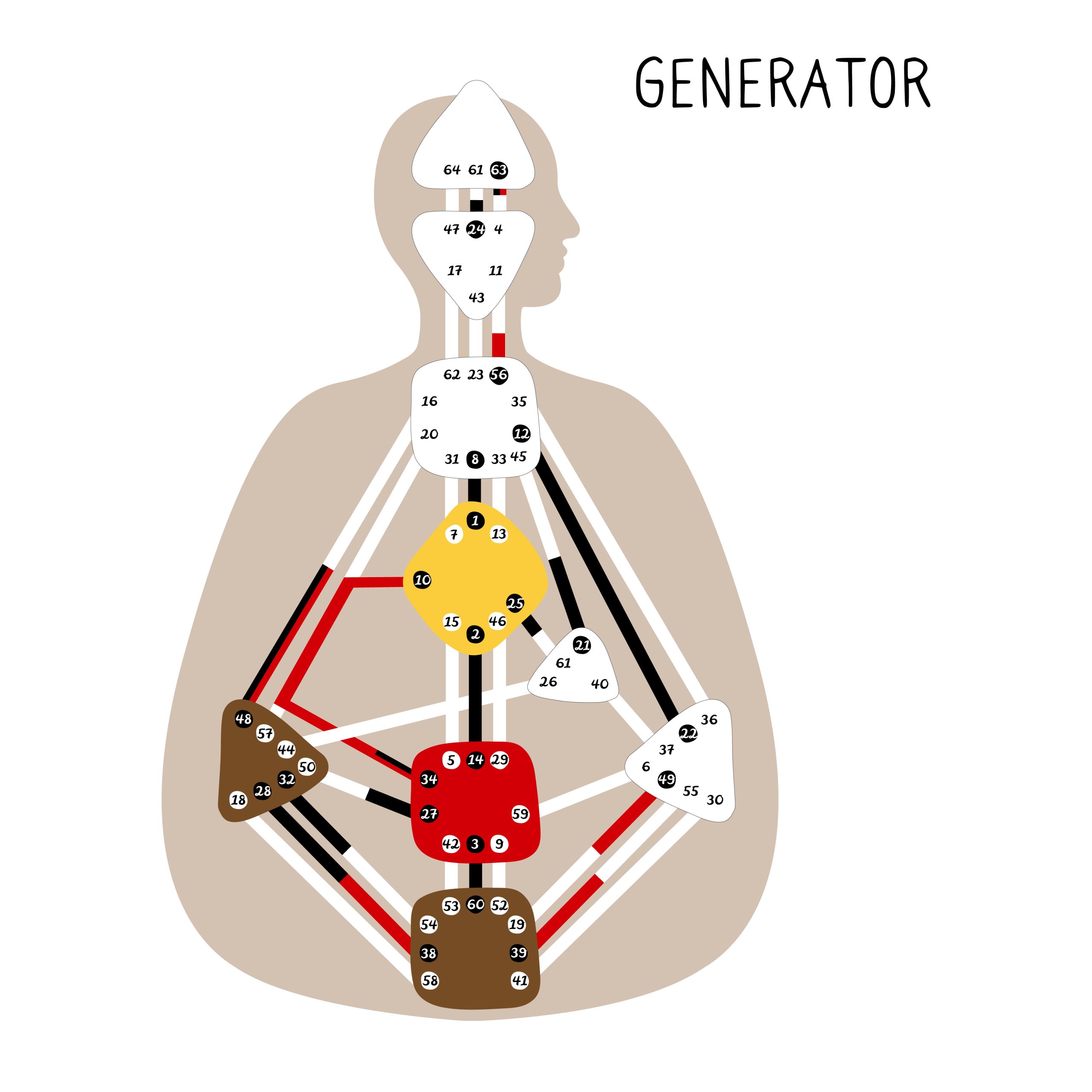 Generators comprise most of the population and possess a sustainable energy source that allows them to work on projects for extended periods. Generators are designed to respond to the world around them and follow their inner guidance to find work and activities that bring them joy and satisfaction.
Generators comprise most of the population and possess a sustainable energy source that allows them to work on projects for extended periods. Generators are designed to respond to the world around them and follow their inner guidance to find work and activities that bring them joy and satisfaction.
Generators are the doers. They are the builders of the world. They have a lot of energy and are here to respond to what life presents them with.
However, if they are not living by their inner guidance, they can experience frustration and dissatisfaction.
Projector
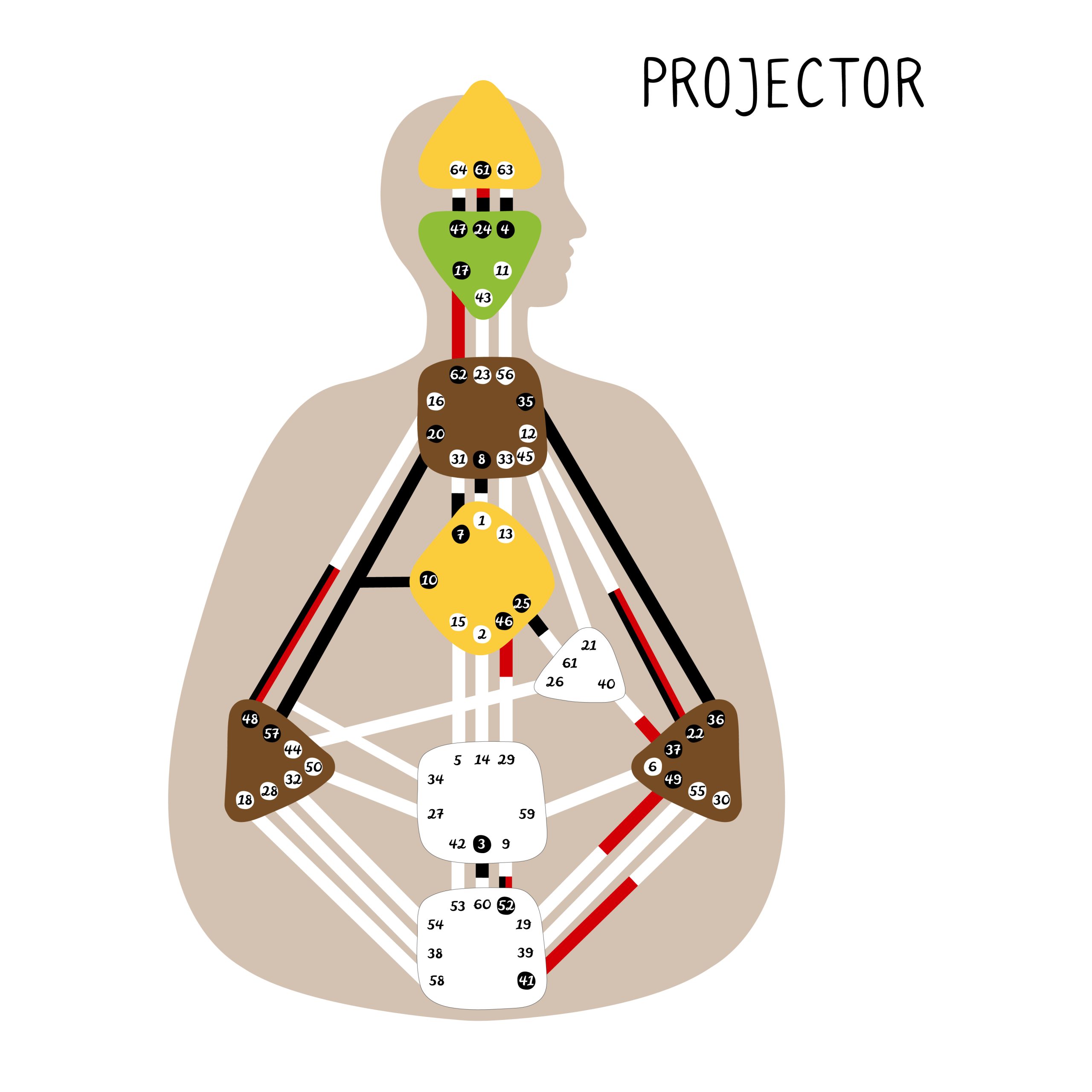 Projectors are natural guides and advisors with a talent for seeing the big picture and recognizing the potential in others.
Projectors are natural guides and advisors with a talent for seeing the big picture and recognizing the potential in others.
Projectors wait for invitations and recognition from others before jumping into action, as their energy is not sustainable for long periods. They are here to provide guidance and direction to others and can often be found in leadership roles.
However, if they try to initiate action without being recognized or invited, they may experience resistance and burnout.
Reflector
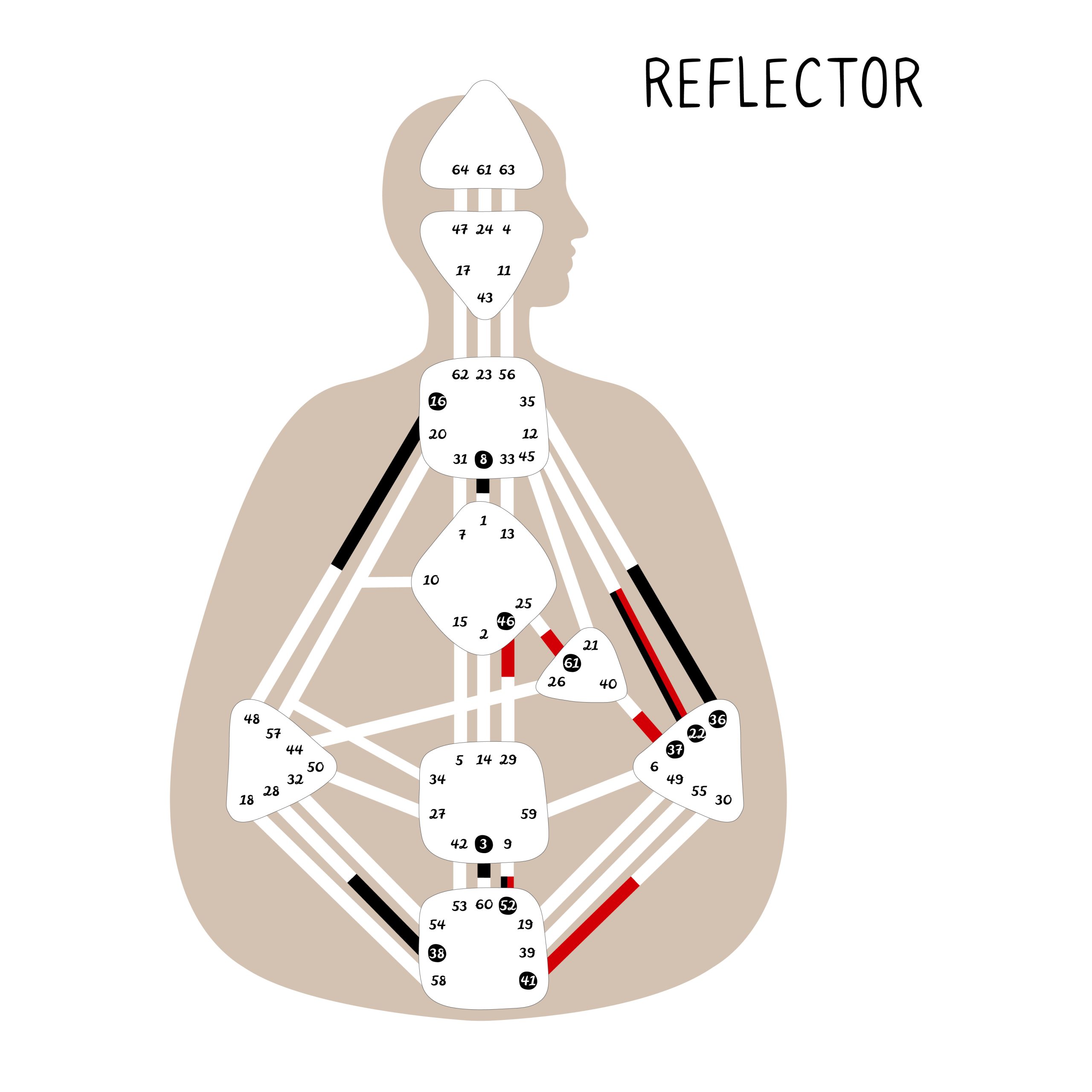 Reflectors are the rarest Human Design type comprising less than 1% of the population. They have a unique ability to reflect the energy of those around them and are highly sensitive to their environment.
Reflectors are the rarest Human Design type comprising less than 1% of the population. They have a unique ability to reflect the energy of those around them and are highly sensitive to their environment.
Reflectors are designed to be mirrors, showing us our community’s and society’s health. They have a gift for observing and assessing. They offer valuable insights into the collective consciousness and help us see where to change our behavior and society.
However, they may struggle to establish their identity and sense of self because they are sensitive to their environment.
Manifesting Generators
Manifesting Generators are a hybrid type in Human Design that combines traits of both the Manifestor and Generator types. They are often described as having the energy and drive of a Generator, with the ability to initiate and make things happen like a Manifestor.
Manifesting Generators have a unique strategy that involves waiting to respond to what feels right for them and starting action when inspired. They are here to create and move quickly but must wait for the right opportunities to respond to avoid frustration and burnout.
Manifesting Generators are often multi-passionate and have many interests, making it challenging to focus on one thing at a time. However, they are passionate about aligning with their unique talents and skills when they work.
Now that you have a basic understanding of the five main Human Design types, a new level of depth is waiting to be explored. Human Design gates, for example, are an incredibly powerful tool for understanding your unique personality traits and tendencies.
Let’s look closer at Human Design gates and how they can help you on your journey of personal empowerment.
Human Design Gates
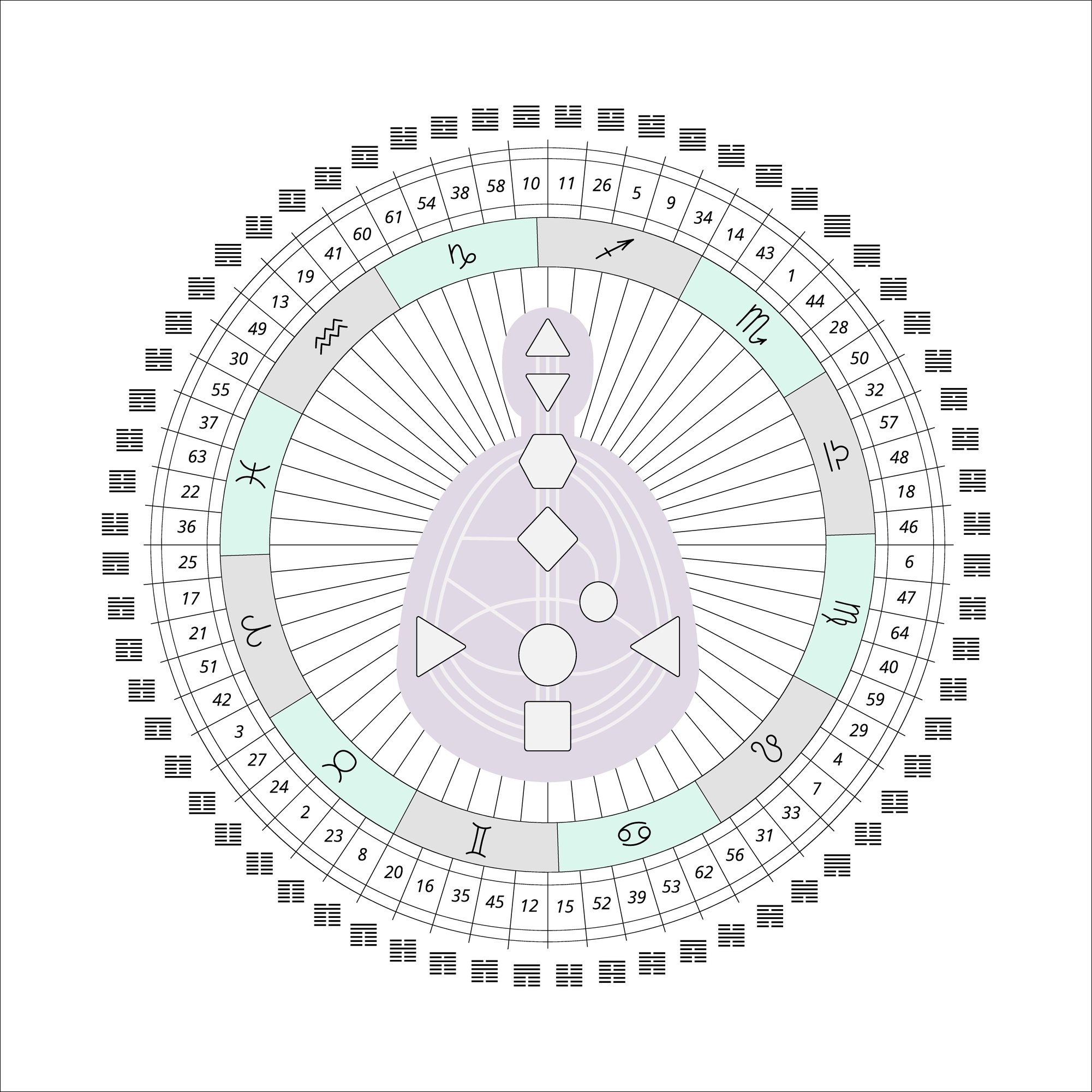 Human Design gates are like building blocks that make up your unique Human Design chart. There are 64 individual gates, each representing a specific energy frequency or trait.
Human Design gates are like building blocks that make up your unique Human Design chart. There are 64 individual gates, each representing a specific energy frequency or trait.
Each gate is associated with a hexagram from the I Ching, a Chinese divination system, and has unique energy and expression. If you have a gate associated with creativity, you may be naturally drawn to artistic pursuits or have a talent for thinking outside the box. Similarly, if you have a gate associated with communication, you may be a gifted writer or public speaker.
When a gate is activated in a person’s chart, it can influence their personality, relationships, and experiences in various ways. For example, a person with an activated Gate 1 may have a solid drive to initiate and create new things.
In contrast, a person with an activated Gate 45 may be talented at bringing people together and building community.
Understanding the gates can also help you make decisions and navigate your life in a way that feels more aligned with your true nature. Our Director of Human Design can help you interpret your gates and their influence on your life.
Human Design gates are divided into 36 channels, which connect the personality levels and create energy flows within your chart.
Here’s more about the channels.
Human Design Channels
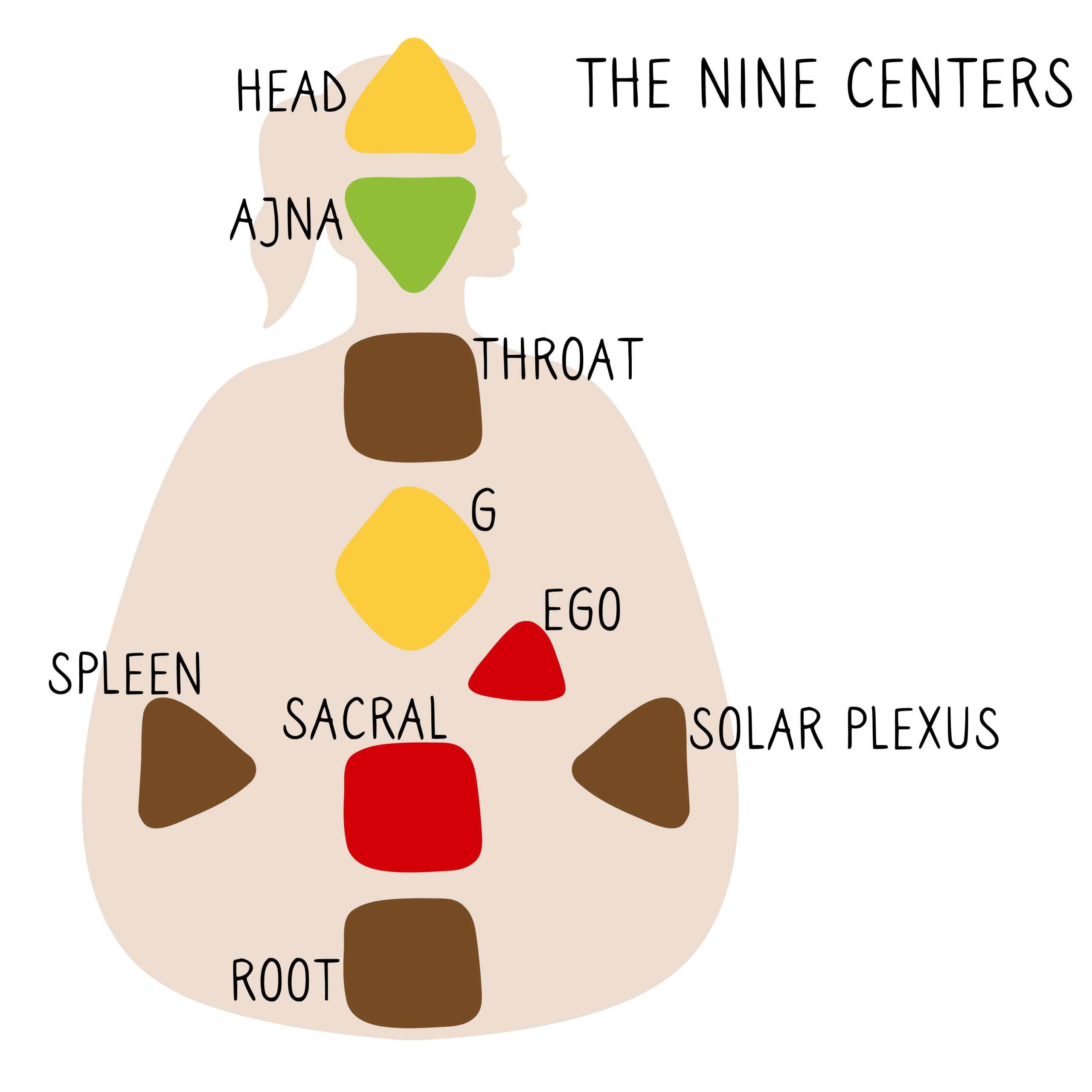 The Human Design channels are pathways that connect two or more centers on the Human Design chart. Each channel is made up of two gates that are connected by a line– together, they form a specific energy circuit. For example, Channel 34-20 connects the Spleen Center to the Throat Center and is associated with the energy of transformation and change.
The Human Design channels are pathways that connect two or more centers on the Human Design chart. Each channel is made up of two gates that are connected by a line– together, they form a specific energy circuit. For example, Channel 34-20 connects the Spleen Center to the Throat Center and is associated with the energy of transformation and change.
When a channel is defined in a person’s chart, it means they have a consistent and reliable flow of energy between the centers connected by that channel. This can influence their personality traits, strengths, challenges, and life experiences.
As we explore the intricacies of Human Design and its various channels, you may wonder how it compares to other systems of personal transformation. And one such system is Gene Keys, which also draws upon ancient wisdom, traditions and modern science to help individuals unlock their full potential.
Here’s how Human Design and Gene Keys differ.
Human Design vs. Gene Keys
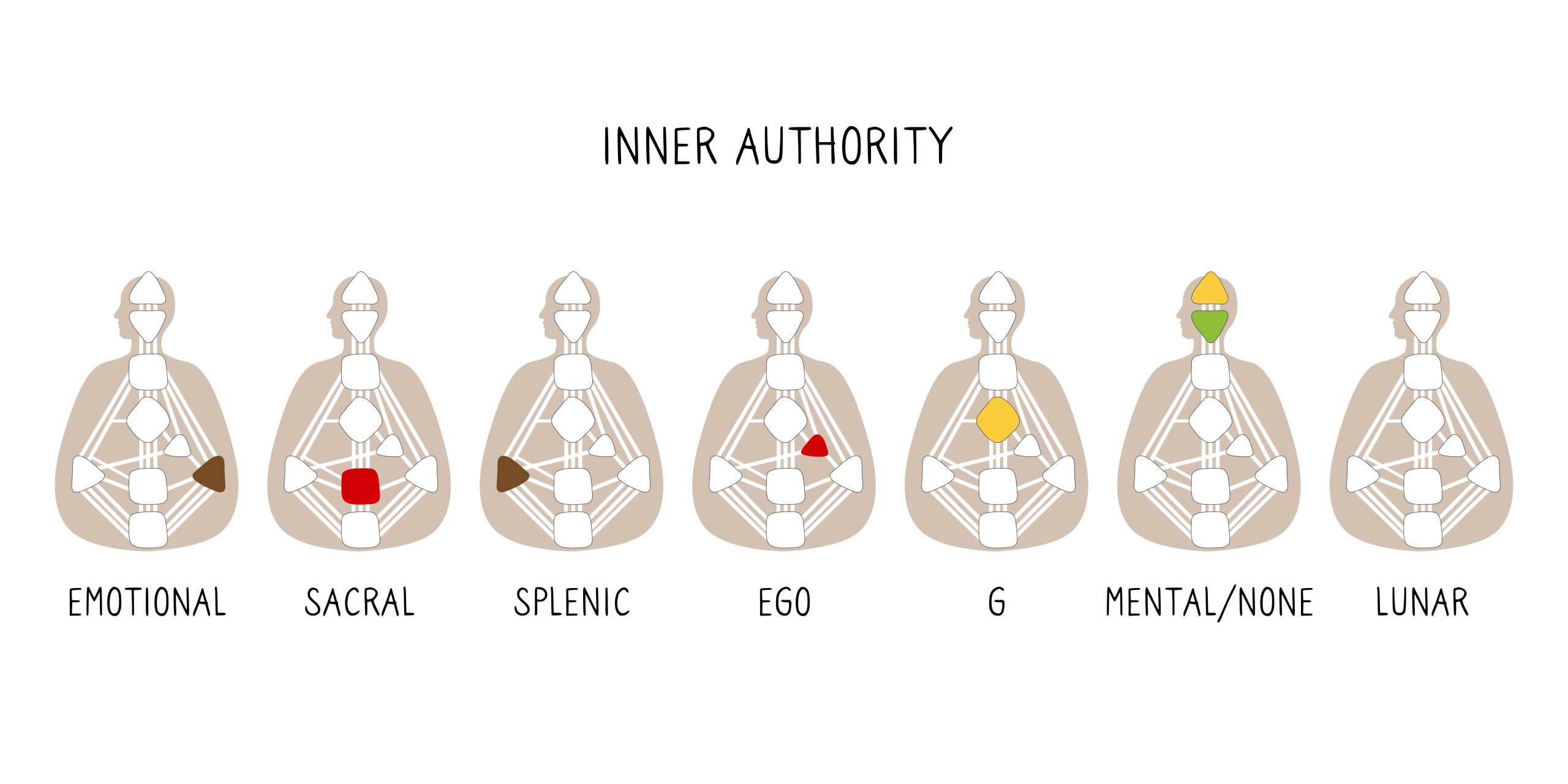
Human Design and Gene Keys are two related but distinct systems that offer insights into human nature, personality, and purpose. While both systems draw on similar sources of wisdom and knowledge, they have different approaches and perspectives.
Gene Keys, for instance, is a system of personal transformation based on the work of the British author and spiritual teacher Richard Rudd. It combines elements of Eastern and Western spirituality, modern science, and ancient wisdom traditions to help individuals unlock their full potential and live a more fulfilling life.
The Gene Keys system is not just about individual transformation, however. It also emphasizes the importance of creating a more compassionate and sustainable world by embodying higher states of consciousness and using our unique gifts to serve the greater good.
Human Design, on the other hand, as we’ve covered, combines elements of the I Ching, the Kabbalah, and quantum physics to create a map of the unique energetic blueprint of an individual. It offers insight into a person’s unique design.
Many other systems aim to help us understand ourselves and the world. One such system is astrology, which has been used for centuries to gain insights into personality traits, life purpose, and potential challenges.
Here’s how astrology and Human Design compare.
Human Design vs. Astrology
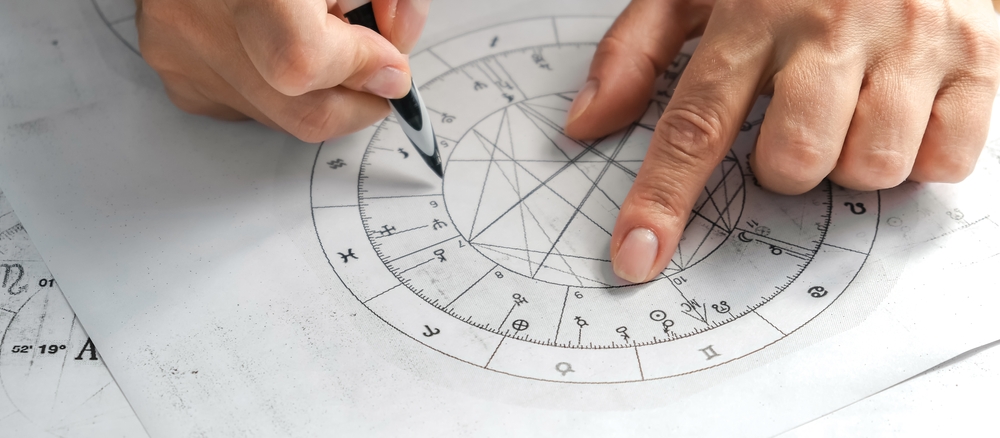 Human Design and astrology are two systems used for understanding and interpreting human personality traits, tendencies, and life paths. While they share some similarities, they are distinct and have unique approaches.
Human Design and astrology are two systems used for understanding and interpreting human personality traits, tendencies, and life paths. While they share some similarities, they are distinct and have unique approaches.
Human Design is a newer system created in the late 20th century that combines elements of many scientific, spiritual, and esoteric teachings. It uses a person’s birth data (date, time, and place) to generate a “polygraph” or “chart” that maps out your unique energetic blueprint.
The chart includes nine centers, each with qualities and functions, channels, and gates representing specific characteristics and experiences. Human Design is focused on helping us understand our unique purpose and path in life and guides us in living in alignment with our true nature.
Astrology, in contrast, is an ancient system that uses the positions and movements of celestial bodies to gain insight into human personality traits, tendencies, and life events. Astrology is based on the idea that there is a connection between the movements of the planets and the patterns of human behavior and events.
Astrologers create a birth chart for an individual based on their birth data, which includes the positions of the sun, moon, planets, and other celestial bodies at the time of their birth. The chart then interprets the individual’s personality traits, strengths, weaknesses, and life path.
Both systems offer valuable insights into our personalities and life paths, but they have different approaches and focus on distinct aspects of a person’s energetic makeup. Human Design focuses more on an individual’s unique purpose and path, while astrology focuses more on personality traits and life events.
While exploring the different systems for understanding human personality and purpose, you may come across the Enneagram. Here’s what makes it different from Human Design.
Human Design vs. Enneagram
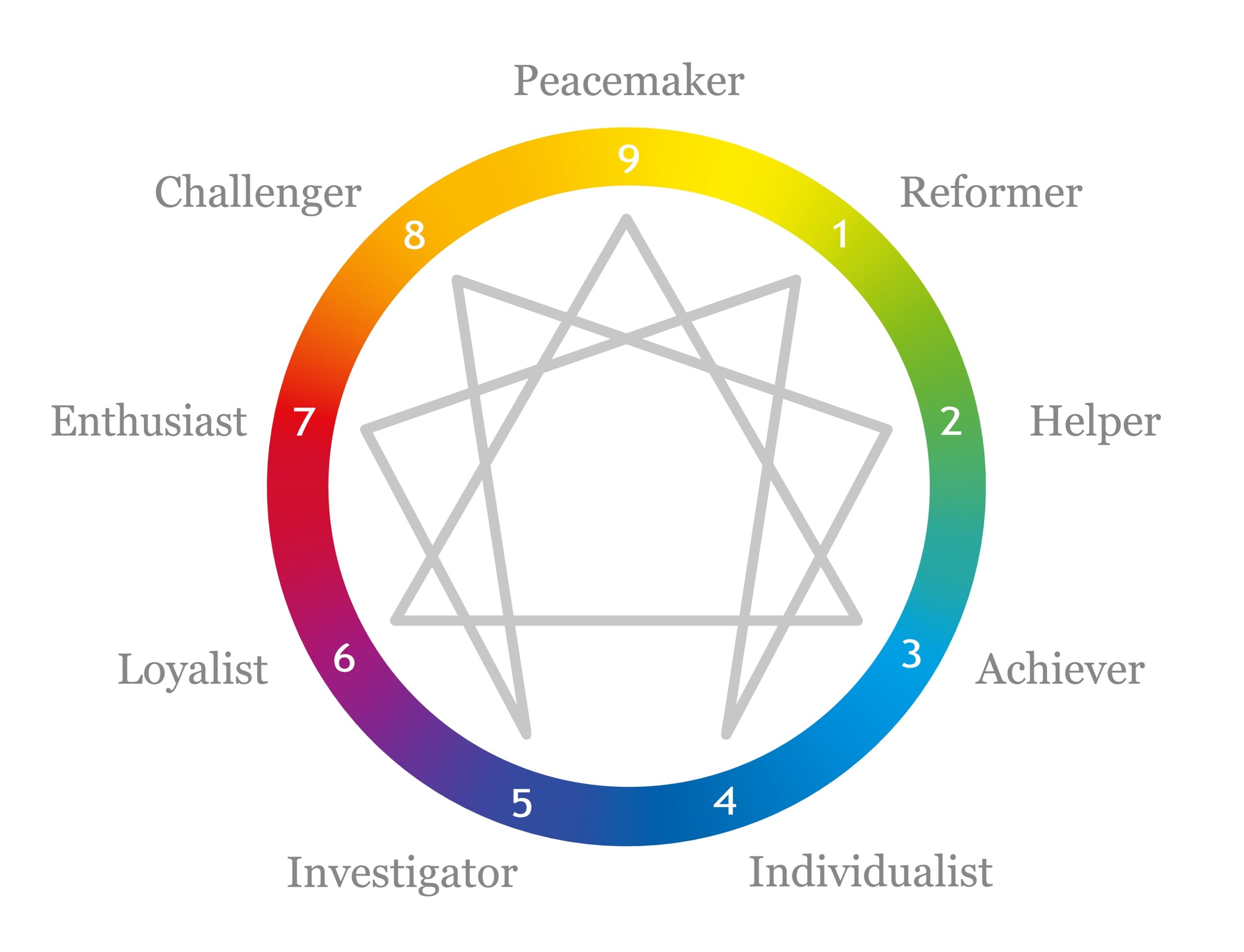 The Enneagram is based on the idea that each person has a dominant personality type but also has elements of other styles. It’s a system that categorizes people into nine personality types, each with motivations, fears, desires, and tendencies. You can use Enneagram’s knowledge to understand yourself and your relationships with others better.
The Enneagram is based on the idea that each person has a dominant personality type but also has elements of other styles. It’s a system that categorizes people into nine personality types, each with motivations, fears, desires, and tendencies. You can use Enneagram’s knowledge to understand yourself and your relationships with others better.
Human Design uses a person’s birth data to create a chart that maps out our unique energetic makeup that represents specific characteristics and experiences. This system helps you understand your unique purpose and path and guides you in living your true nature.
Unlike Human Design, which focuses more on an individual’s unique blueprint, the Enneagram emphasizes the common patterns and tendencies we all share.
Enneagram and Human Design offer valuable insights into human nature, but Vedic Astrology is another system that can guide even deeper into understanding your life path and purpose.
Here’s how it compares to Human Design.
Human Design vs. Vedic Astrology
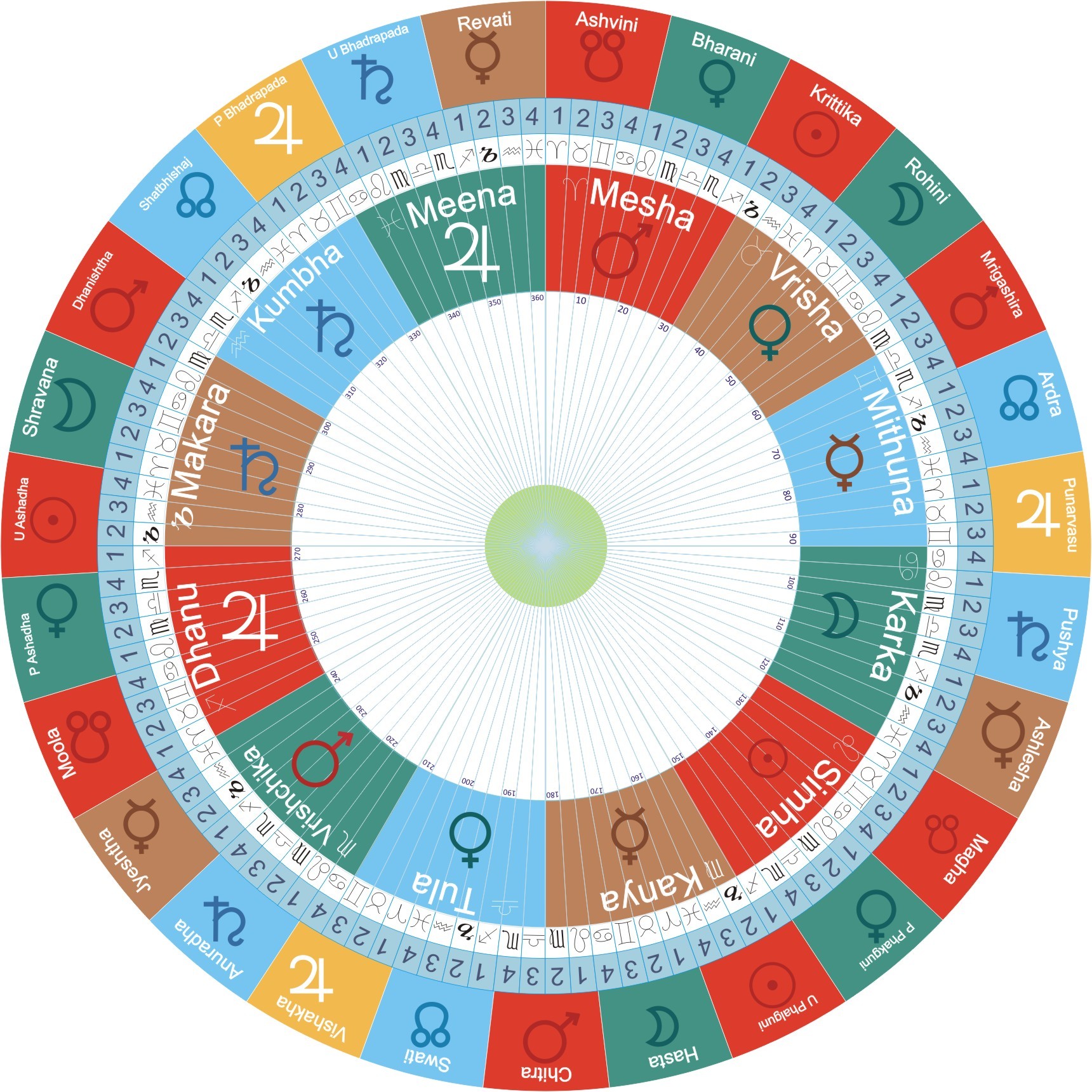 Vedic Astrology, also known as Jyotish, is a traditional Hindu system that uses a person’s birth data to analyze the positions of celestial bodies and their influence on humans. This system maps an individual’s destiny and guides everything from career choices to relationship compatibility.
Vedic Astrology, also known as Jyotish, is a traditional Hindu system that uses a person’s birth data to analyze the positions of celestial bodies and their influence on humans. This system maps an individual’s destiny and guides everything from career choices to relationship compatibility.
Similarly, Human Design uses birth data to create a chart that traces a person’s unique energetic makeup, with each center, channel, and gate representing specific characteristics and experiences.
While Vedic Astrology focuses on the positions of celestial bodies and their influence on us, Human Design combines elements of many scientific, spiritual, and esoteric teachings to create a more comprehensive understanding of a person’s energetic makeup.
What’s more, Vedic Astrology offers guidance on one’s destiny (think life events, personality traits), while Human Design centers around a person’s unique purpose and path.
Ultimately, choosing between the two systems depends on your preference and what resonates with you.
Moving on from Vedic Astrology, let’s look at another popular personality assessment tool– the Myers-Briggs Type Indicator (MBTI).
Human Design vs. MBTI
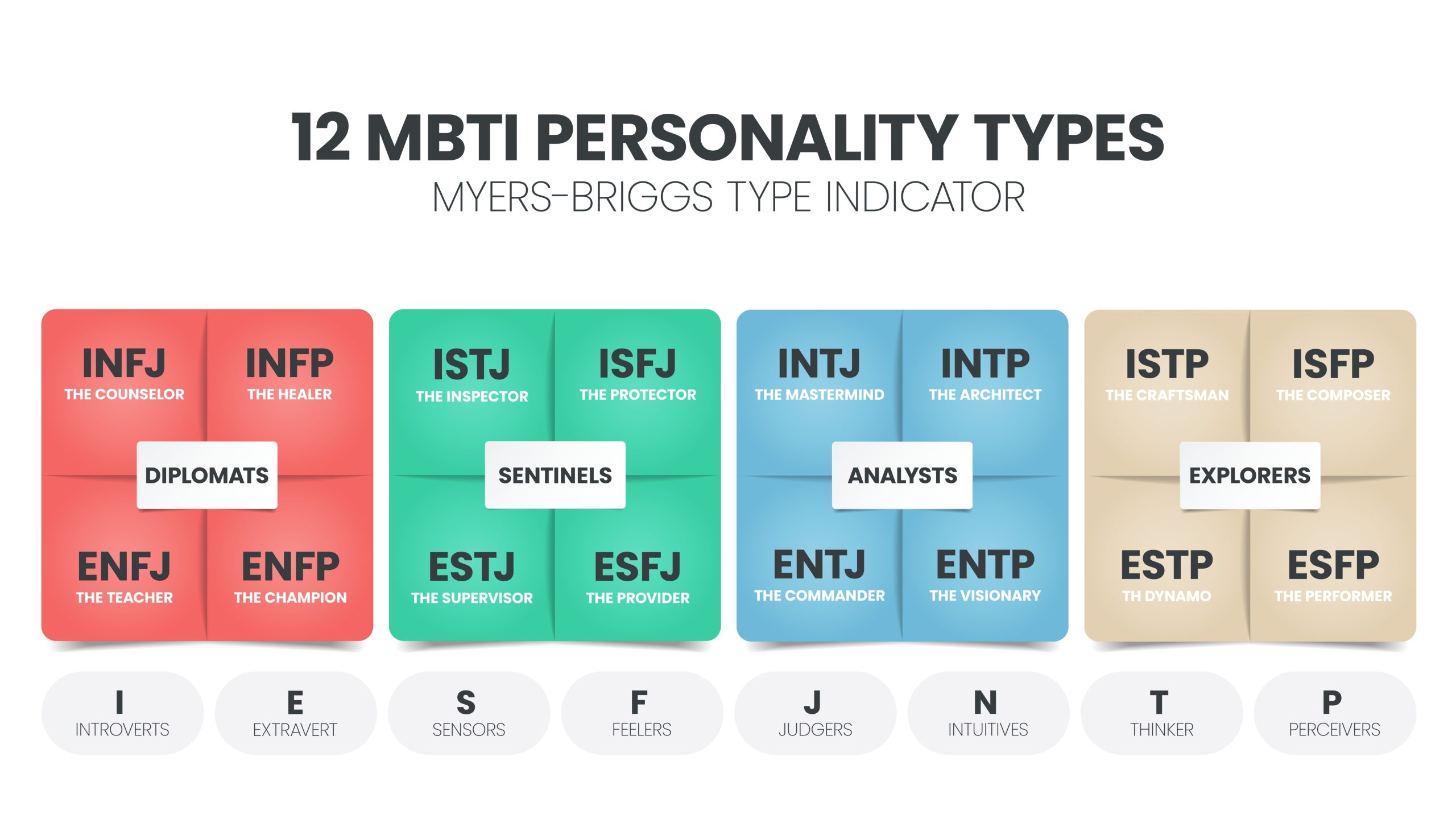 Unlike Human Design, which is rooted in a combination of scientific, spiritual, and esoteric teachings, the MBTI is based on the psychological theories of Carl Jung.
Unlike Human Design, which is rooted in a combination of scientific, spiritual, and esoteric teachings, the MBTI is based on the psychological theories of Carl Jung.
The MBTI assesses an individual’s personality based on four dichotomies (categories). They are:
– Extraversion vs. Introversion (E/I)
– Sensing vs. Intuition (S/N)
– Thinking vs. Feeling (T/F)
– Judging vs. Perceiving (J/P)
Each person is assigned a combination of letters corresponding to their personality type, with 16 possible types.
While both Human Design and the MBTI offer insights into personality traits and tendencies, their approaches are vastly different.
MBTI focuses on observable characteristics and behavior patterns, while Human Design provides a more in-depth analysis of an individual’s energetic makeup and purpose in life.
Another fascinating spiritual system worth mentioning is the Kabbalah. Here is how it compares to Human design.
Human Design vs. Kabbalah
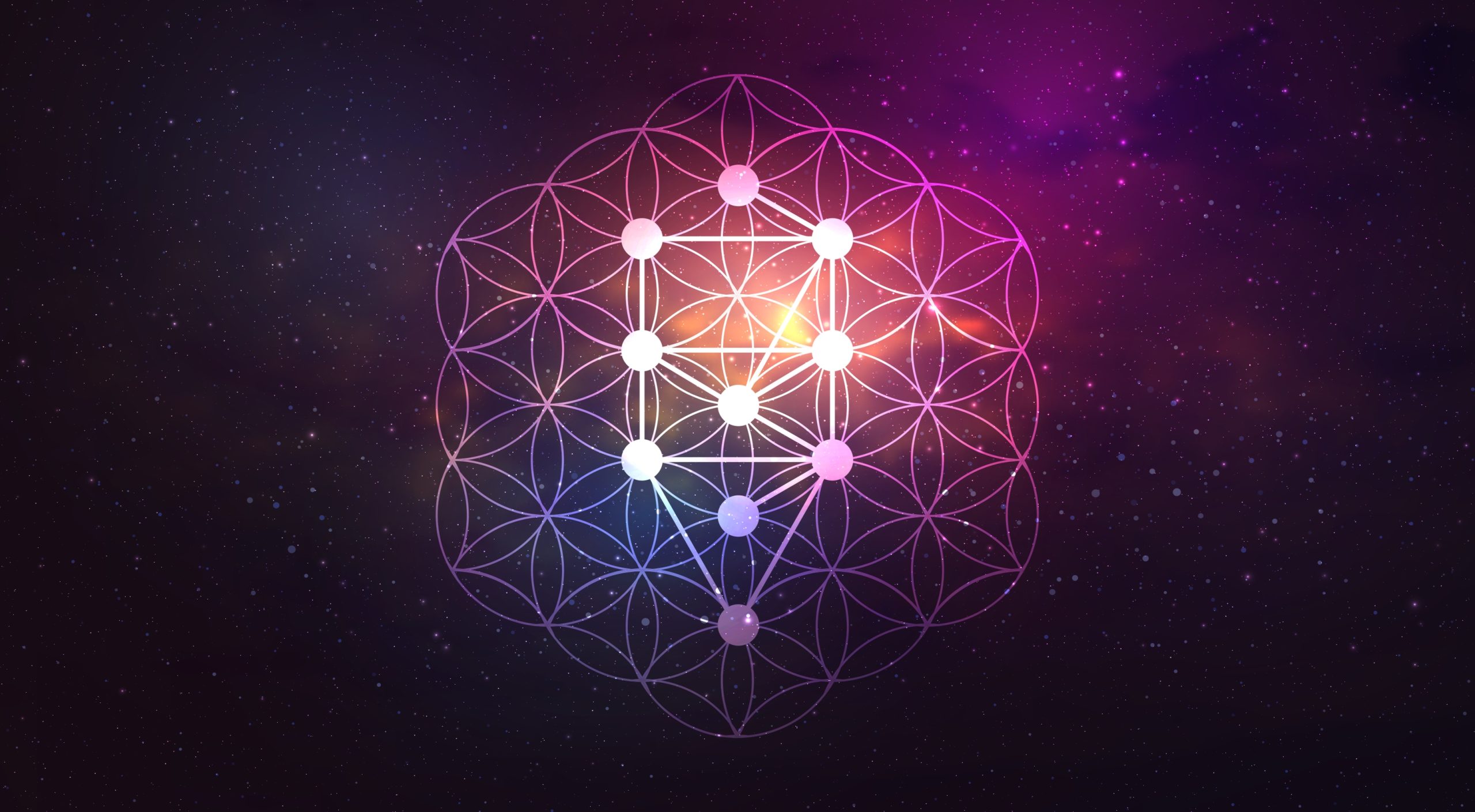 Kabbalah is a mystical tradition that originated in Judaism, and it provides a framework for understanding the nature of God, the cosmos, and the human soul.
Kabbalah is a mystical tradition that originated in Judaism, and it provides a framework for understanding the nature of God, the cosmos, and the human soul.
The similarities between Kabbalah and Human Design are centered around understanding the nature of reality and the interconnectedness of all things. However, the two schools of thought differ in their spiritual growth and self-knowledge approach.
Like Human Design, Kabbalah seeks to unlock the secrets of the universe and the individual’s place within it. It uses a complex system of symbols, numerology, and meditation to help individuals gain insights into their inner selves and connect with the divine.
Human Design, on the other hand, focuses on your unique energetic makeup and purpose in life. Kabbalah offers a more spiritual approach, guiding us on a journey of self-discovery and connection to a higher power.
Both methods provide valuable insights and guidance for those seeking to understand themselves and the nature of reality on a deeper level.
Human Design In Practice: Examples of How to Use Human Design to Shape Your Path
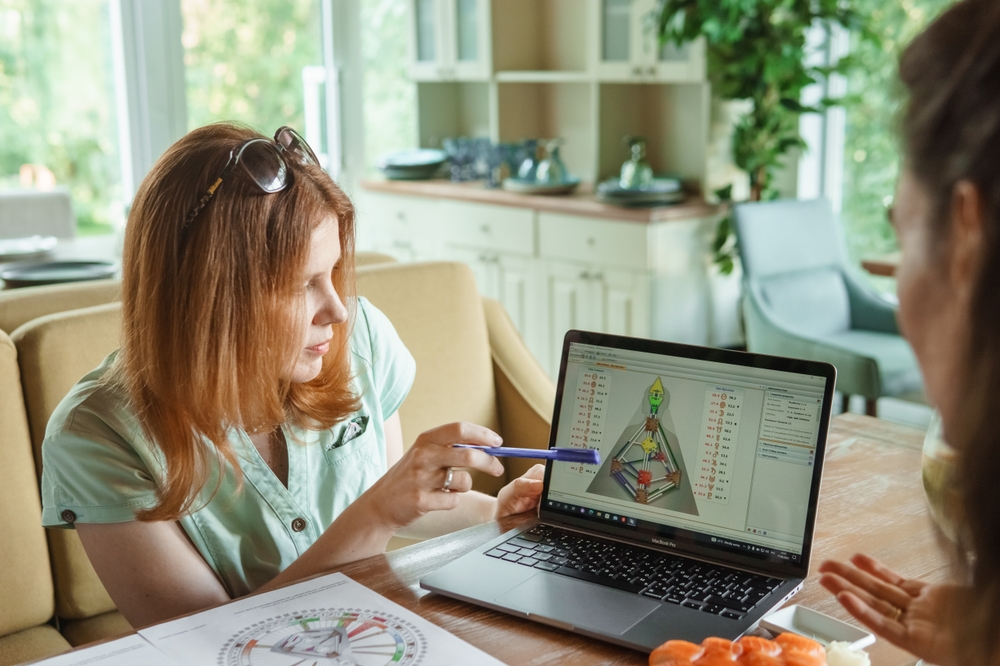
Human Design shows you your unique energetic makeup and how you can live in alignment with your true nature. But in which areas of your life do you apply it, and how?
Well, the possibilities are endless!
Say you’re struggling to find fulfillment in your career. Your Human Design chart shows that you have a defined Sacral Center, indicating a reliable energy source and can consistently commit to tasks. This finding suggests that a job that allows you to use this energy practically and commit to a project long-term may be more fulfilling for you.
People with a defined Throat Center in their Human Design chart may have a natural talent for communication and expression. However, they may also feel pressure to constantly communicate and express themselves, which can lead to burnout. Understanding this aspect of your design can help you balance your need for self-expression with rest and rejuvenation.
Here’s another example. You may struggle with a sense of identity and direction if you have an undefined G Center in your Human Design chart. Understanding this design aspect can help you recognize that you’re here to explore different paths and experiences. Your sense of self and purpose may evolve and change over time.
If you have an open Emotional Center, you may tend to take on the emotions of those around you, leading to mood swings and a lack of emotional clarity. Understanding this aspect of your energetic makeup can help you identify when you are absorbing other people’s emotions and learn how to manage your emotional boundaries better.
Incorporating Human Design into all aspects of your life can help you make decisions that align with your true nature, deal with emotions better, and communicate more effectively in relationships.
Human Design & Relationships
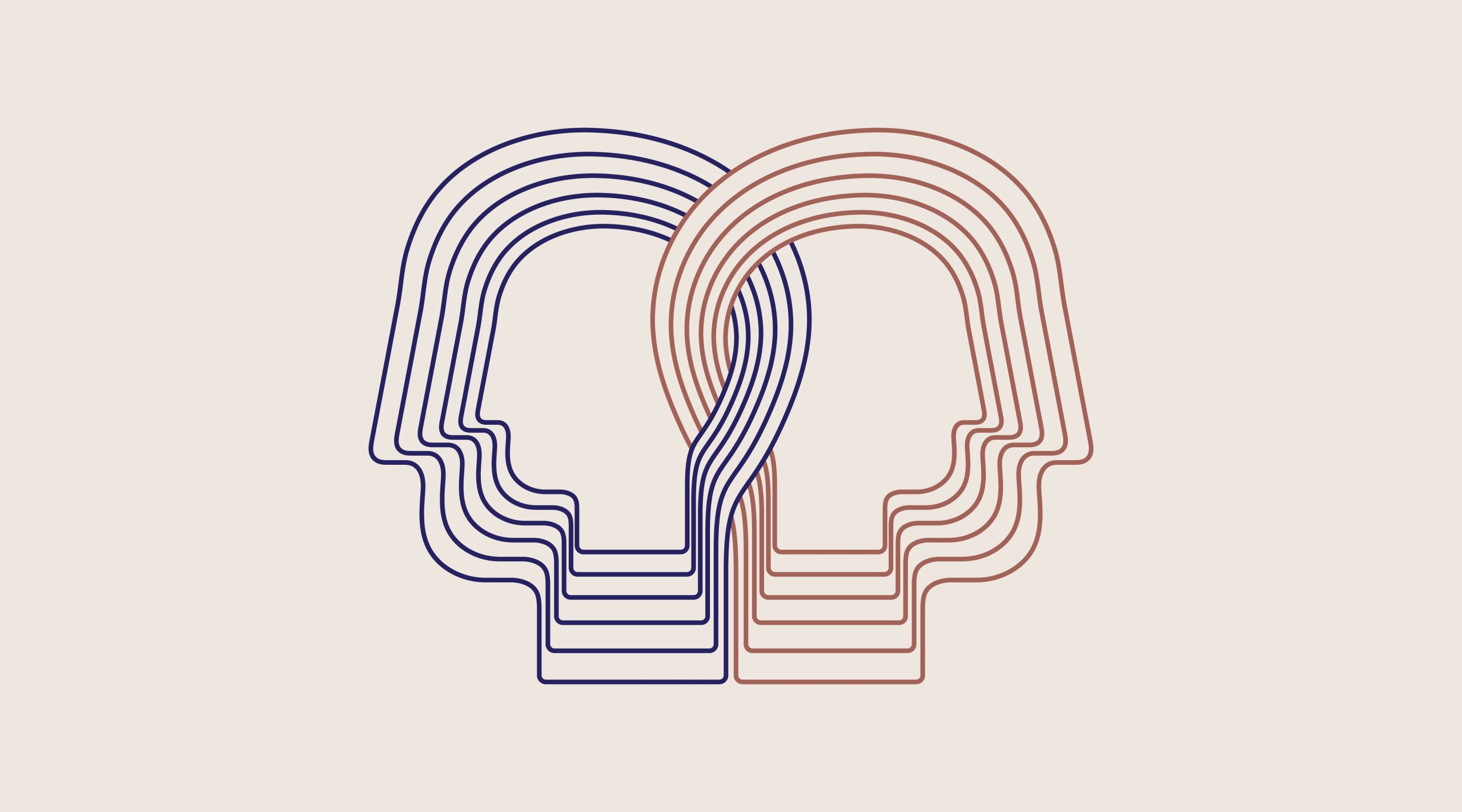 Understanding your Human Design can also impact your relationships. For instance, suppose you have an open Heart Center, indicating you are highly empathic and sensitive to others’ emotions. You may find that setting healthy boundaries and communicating your needs is essential for maintaining healthy relationships.
Understanding your Human Design can also impact your relationships. For instance, suppose you have an open Heart Center, indicating you are highly empathic and sensitive to others’ emotions. You may find that setting healthy boundaries and communicating your needs is essential for maintaining healthy relationships.
Human Design can be a powerful tool for understanding how you and your partner, friends, or family interact energetically. By understanding your own unique energetic makeup and that of those around you, you can navigate relationships with greater ease and harmony.
Compatibility
Human Design can determine your compatibility with other people. For example, individuals with defined Sacral Centers may be compatible with those with open Sacral Centers, as they can provide energy and vitality to one another.
Similarly, a person with a defined throat center (which indicates a natural ability to communicate and express yourself) may need more space to speak freely. In contrast, someone with an undefined throat center may need more time to process and respond.
Human Design can also offer guidance on relationship dynamics. Knowing your type and that of your partner or loved one can provide insight into potential areas of harmony and conflict.
For instance, a relationship between two Generators may thrive on mutual support and shared interests. In contrast, a relationship between a Projector and a Manifestor may require more conscious effort to balance the dynamics of the two people.
Communication
Human Design is a valuable tool in communication, as it can help us better understand our communication style and those around us.
Suppose you are someone with an open Throat Center. In that case,
you may take on the opinions and ideas of others without filtering them, which often results in unclear or inconsistent communication.
On the other hand, if you have a defined Throat Center, you may have a more confident and consistent communication style but may also tend to dominate conversations.
Human Design can help you recognize your communication strengths and challenges. It can help improve your communication skills and understanding others’ communication styles, leading to more effective and harmonious communication.
Let’s say you are working on a team project with someone who has an open Head Center. This person may generate many ideas and possibilities but struggle with making decisions and following through. By understanding their open Head Center and providing them with structure and guidance, you can help them better focus their ideas and contribute more effectively.
Emotional Dynamics
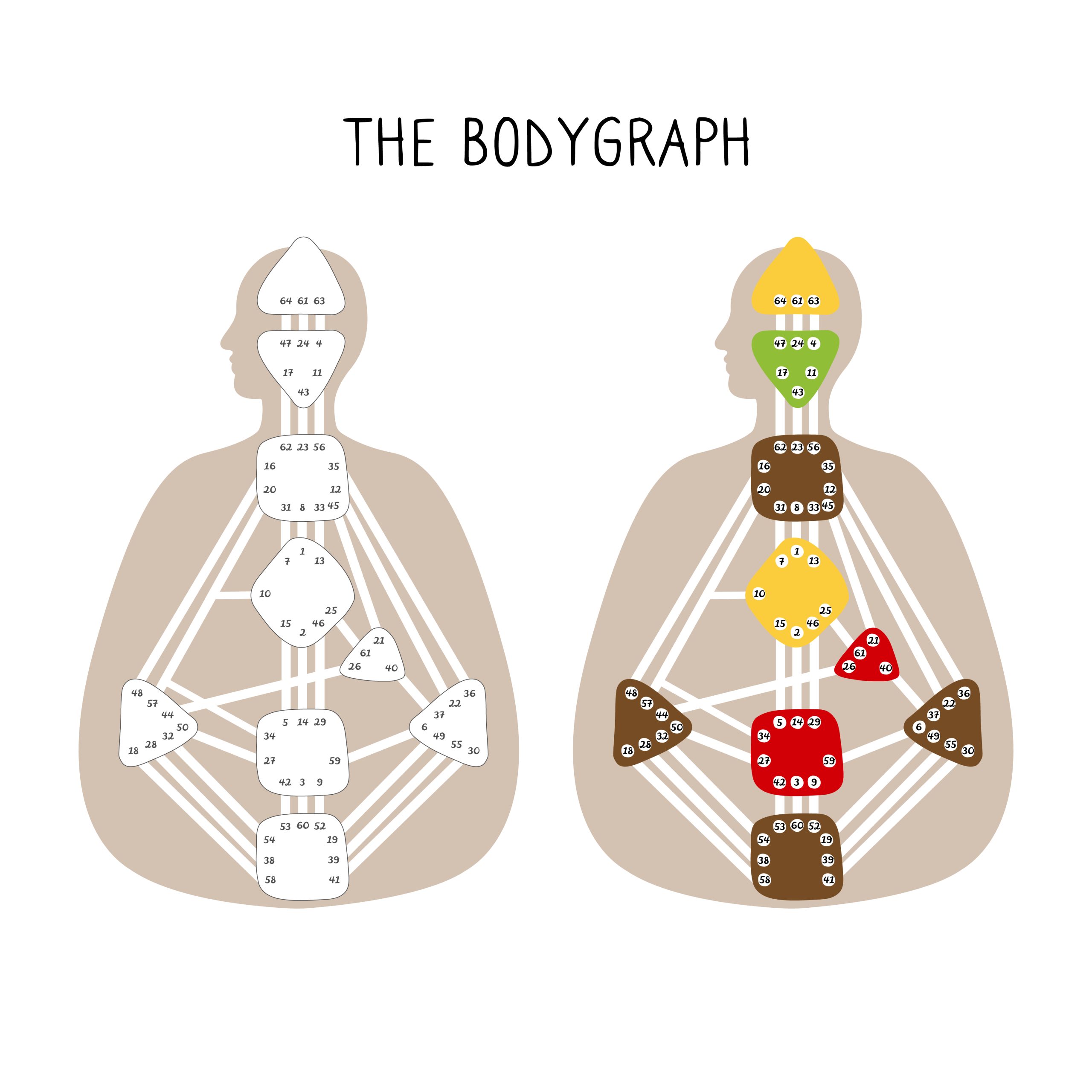 Human Design also provides insight into emotional dynamics between people. It’s valuable in helping us process and express emotions. Each Human Design type has its unique emotional energy and processing style, which can influence how we interact with others.
Human Design also provides insight into emotional dynamics between people. It’s valuable in helping us process and express emotions. Each Human Design type has its unique emotional energy and processing style, which can influence how we interact with others.
Projectors, for example, often struggle with feeling a sense of recognition and can feel bitter when their contributions are not appreciated. They can benefit from taking time to wait for invitations rather than pushing their way into situations.
Manifestors can experience frustration when they feel their autonomy is being threatened or when they feel that others are trying to control them. They may need to communicate their needs and desires clearly and directly to prevent feelings of anger or resentment.
Generators and Manifesting Generators have a defined sacral center, giving them a consistent life force energy source. They can use this energy to fuel their passions and engage in activities that bring them joy and fulfillment. However, they may experience frustration or burnout if they engage in activities that do not align with their inner truth.
Reflectors are highly sensitive to their environment and the emotions of those around them. They need to take time to process their feelings and make decisions rather than rushing into things impulsively.
Understanding your own unique emotional dynamics and those of others can help you communicate more effectively, build stronger relationships, and ultimately lead a more fulfilling life.
Boundaries
Another aspect of our lives, Human Design can be helpful with, is setting and respecting boundaries in relationships and life. Each Human Design type has a specific strategy for making decisions and interacting with others, which can inform you how to set and maintain healthy boundaries.
For example, a Generator type may need to learn to say “no” to requests that don’t align with their true desires and passions. At the same time, a person with a Projector type may need to establish clear boundaries around their availability and avoid taking on too much work or responsibility.
A person with an open Emotional Center may need to establish boundaries around taking on the emotional energy of others. In contrast, a person with an open Spleen Center may need to set boundaries around taking unnecessary risks or neglecting their physical health.
Human Design can guide you in finding the specific areas of life where you may need to set boundaries to protect your energy and well-being. The system is also quite helpful in dealing with conflicts. Here’s how.
Conflict Resolution
Conflict is hard to deal with, so we can all use Human Design’s help in navigating and resolving disputes effectively. Here are a few ways that Human Design can be applied to conflict resolution:
– Understanding communication styles
The system of Human Design can reveal a person’s preferred method of communication. It gives you and others understanding and direction on communicating more effectively. For example, if someone has an open Throat center, they may need more time to process their thoughts before responding, so giving them space is helpful.
– Respecting different decision-making strategies
Learning more about people through Human Design can also reveal how everyone approaches decision-making and why. For example, a person with a defined Sacral center may need to make decisions based on their gut instincts. In contrast, someone with a defined Head center may need more time to analyze and consider options before deciding.
– Identifying areas of compatibility
Compatibility is another area that determines how well two people deal with conflict. Human Design offers an insight into the chances of two people reaching a resolution.
For example, suppose both people have defined Emotional centers. In that case, they may easily understand and support each other’s emotional needs. In contrast, if one person has an open Heart center and the other has a defined Heart center, they may have different approaches to expressing and receiving love.
Human Design can help people approach conflict resolution with more compassion and understanding, thus leading to more harmonious relationships and groups.
The system of Human Design can also be helpful in business.
Human Design & Business
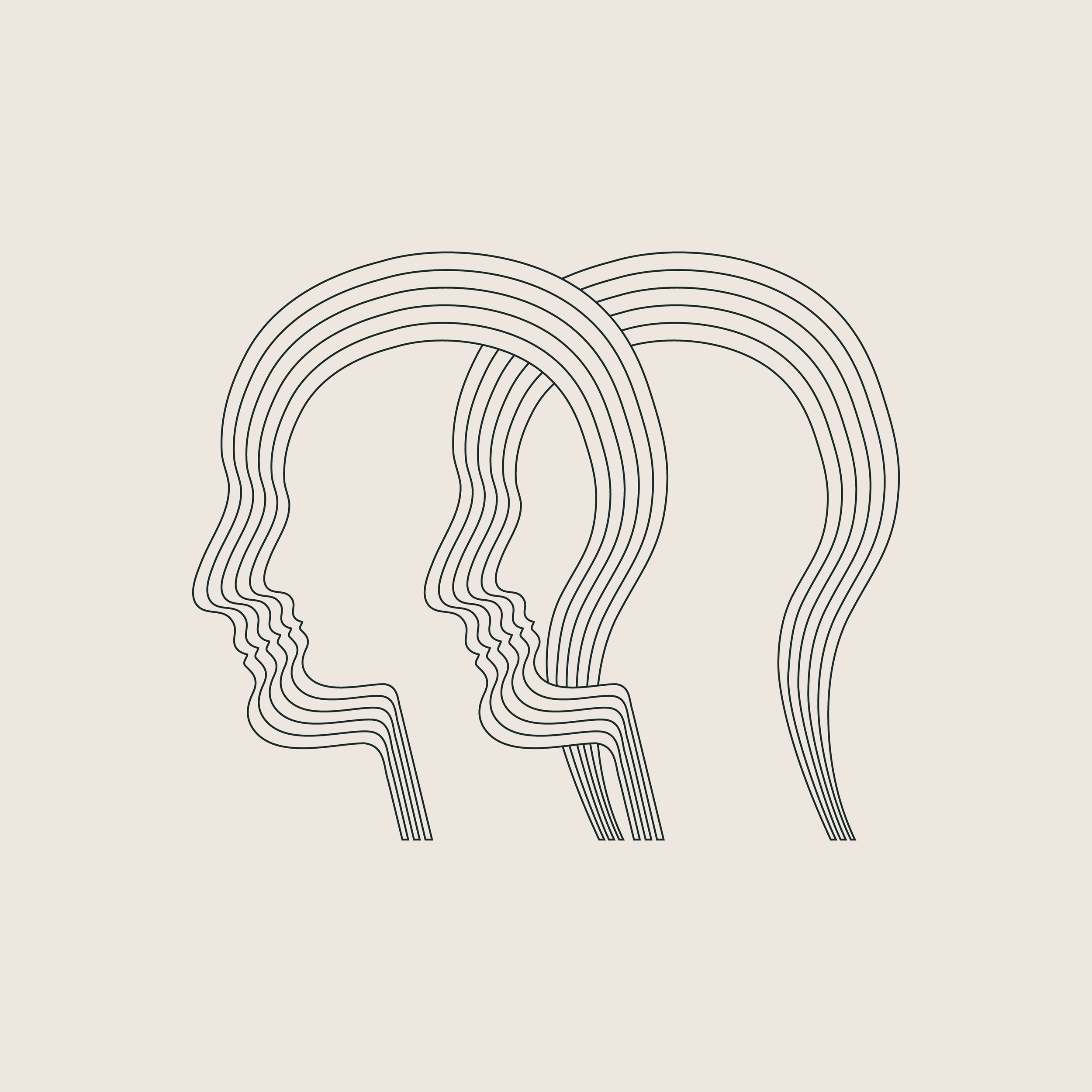 Human Design can be a powerful tool for business leaders and entrepreneurs, helping them determine strengths, tendencies, and potential challenges.
Human Design can be a powerful tool for business leaders and entrepreneurs, helping them determine strengths, tendencies, and potential challenges.
Here are a few areas of your business you can apply the system.
Hiring & Team Building
Human Design can help leaders build effective and productive teams. By understanding the Human Design types and strengths of their team members, leaders can create well-rounded and complementary teams.
In hiring your team, Human Design can be a helpful tool in understanding a candidate’s Human Design type. It can help you determine how well their strengths fit your business environment and job position.
With Human Design, you can create a more well-rounded team and ensure that each person is in a role that suits them. The better each team member fits their role and the team, the better your business will be.
Decision-Making
Human Design can help leaders make better decisions by understanding how to build and implement strategy and authority. For example, a Manifestor may need to inform others before making a decision, while a Projector may need to wait for an invitation before taking action.
Marketing & Sales
Human Design can inform marketing and sales strategies. By understanding the Human Design types and tendencies of their target audience, businesses can create more effective marketing and sales campaigns that resonate with their audience.
Productivity & Time Management
Human Design can help you and your team understand how each individual’s unique energy and productivity rhythms. For example, a Generator may have the most energy and productivity in the morning, while a Projector may need more rest and downtime throughout the day.
Business Strategy
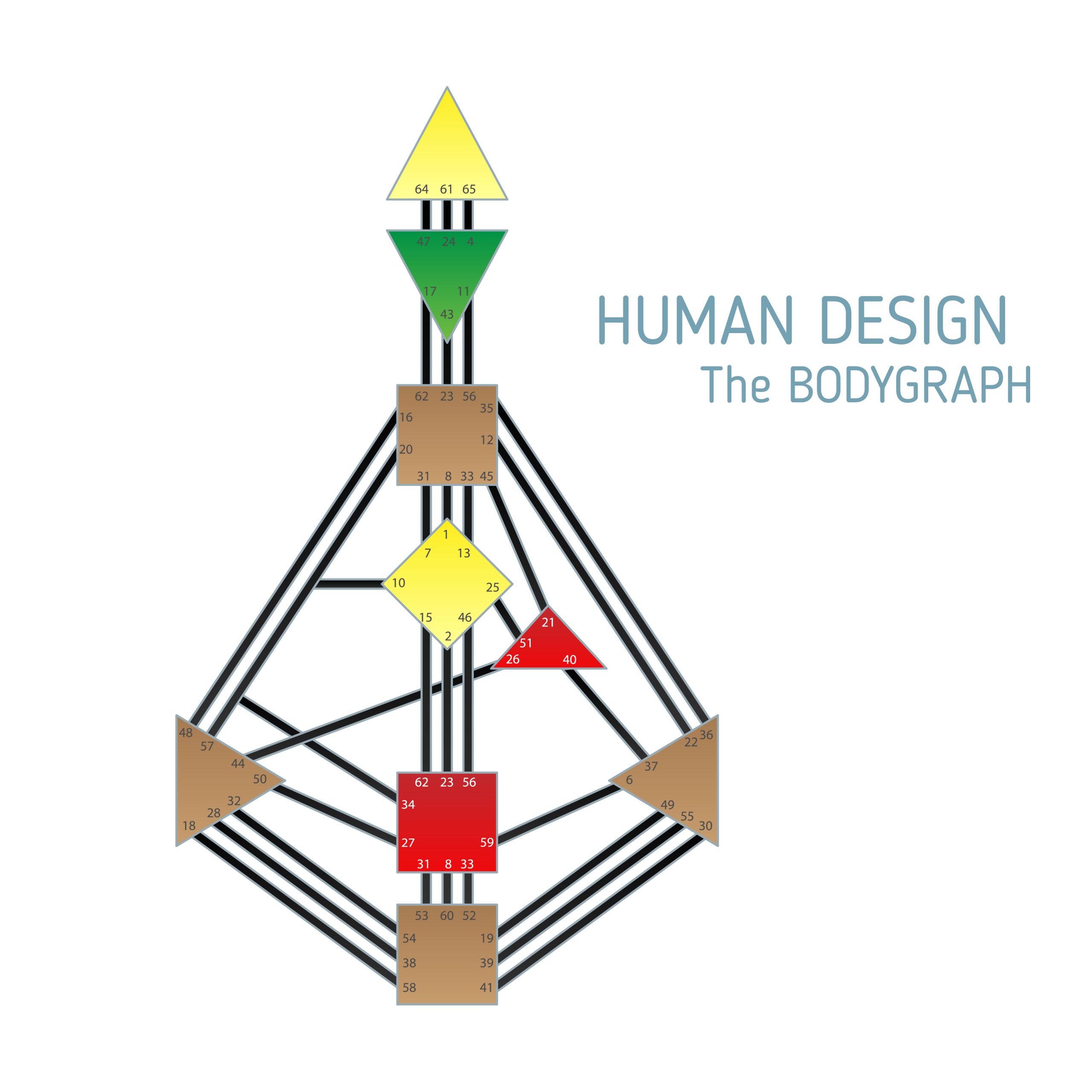 Human Design is very insightful regarding a person’s strengths and potential challenges, allowing them to create a personal and professional strategy that aligns with their true nature, purpose, and career aspirations.
Human Design is very insightful regarding a person’s strengths and potential challenges, allowing them to create a personal and professional strategy that aligns with their true nature, purpose, and career aspirations.
By using Human Design as a tool for self-awareness and understanding, business leaders and entrepreneurs can create businesses that align with goals and purpose and are more productive, fulfilling, and successful.
Another area Human Design can have a positive impact on is money management. Here’s how the system can help.
Human Design & Money
If you’re struggling with managing your money or need additional guidance in approaching this area of your life, Human Design might be the right tool. Through the system, you can glimpse into how your personality affects your relationship with money and what’s your unique approach to wealth creation and financial management.
Here are the different categories impacted by this school of thought.
Money Mindset
Through Human Design, you will better understand your money mindset and beliefs about wealth. For example, an individual with an open Root Center may feel pressured and stressed about money. In contrast, individuals with a defined Root Center may feel more grounded and confident about financial matters.
Wealth Creation
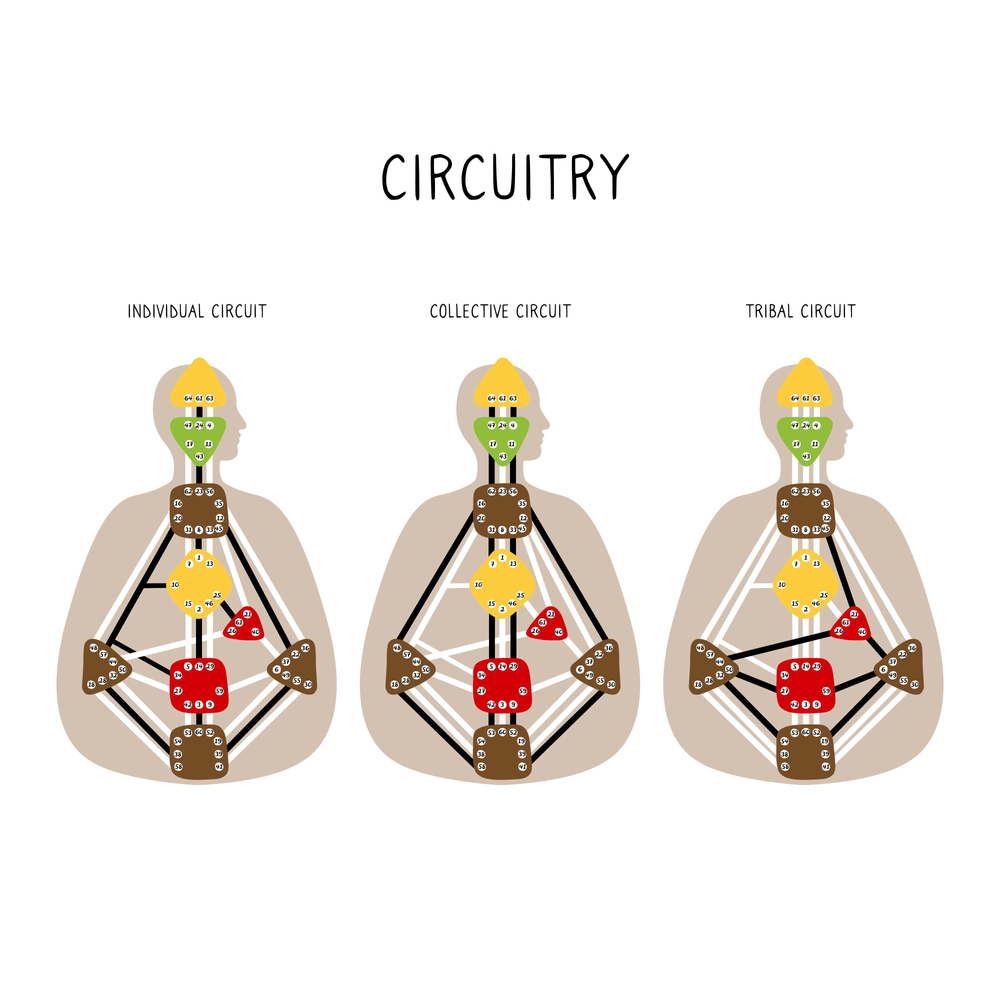 If you need help learning more about your strength and talents in terms of wealth creation–Human Design might be the thing. Knowing your unique traits allows you to identify opportunities for wealth creation that align with your true nature and purpose.
If you need help learning more about your strength and talents in terms of wealth creation–Human Design might be the thing. Knowing your unique traits allows you to identify opportunities for wealth creation that align with your true nature and purpose.
Financial Management
Financial management is sometimes a complicated topic that needs more knowledge. And Human Design can help you learn how to develop effective strategies to deal with finances. For example, a Generator may need to be mindful of how they use their energy and resources to achieve financial stability and abundance.
Career Path
Another critical aspect connected to your finances and overall well-being, Human Design can help with is your career path. The system’s principles allow you to identify better opportunities that align with your nature and purpose and help you reach financial success and fulfillment.
Abundance Mindset
Human Design is the supportive system that aids you in developing an abundance mindset. It can guide you into attracting wealth and abundance through positive thinking and focusing on gratitude and abundance.
5 Techniques for Incorporating Human Design into Daily Life
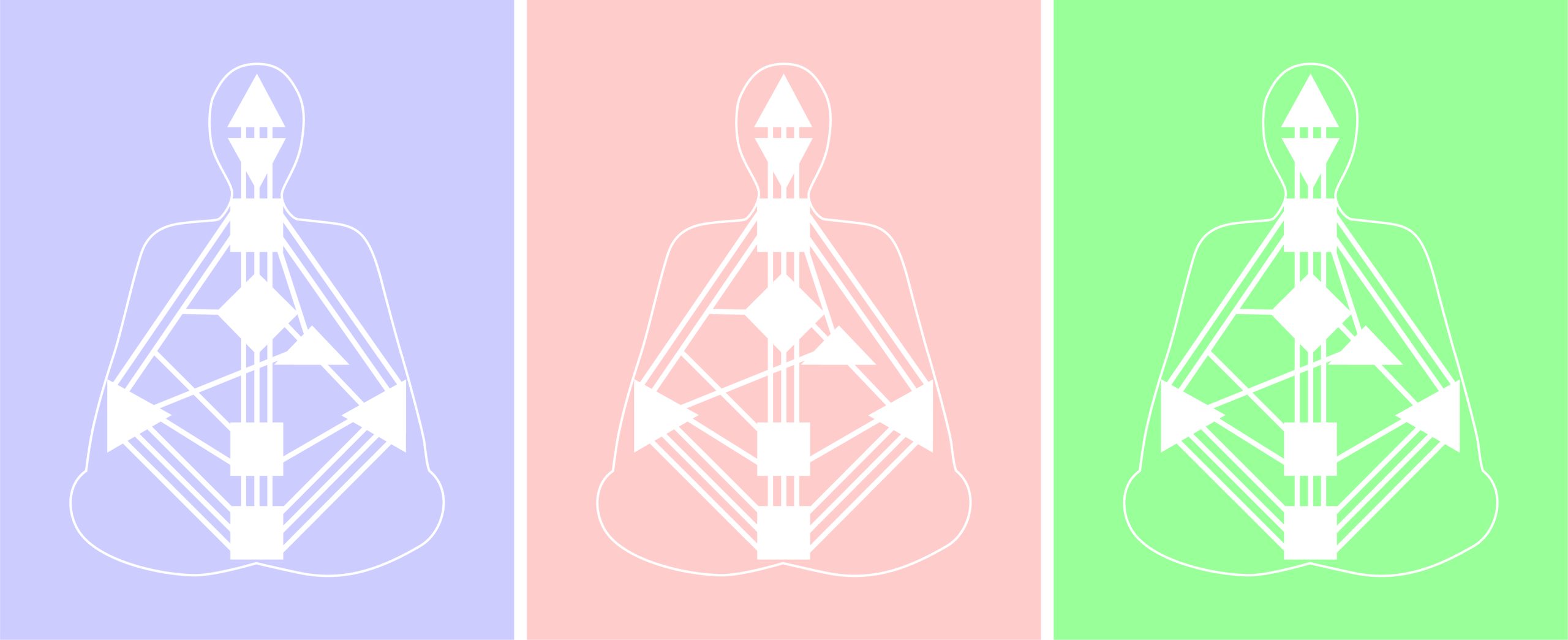
There are many ways to incorporate Human Design into your daily life. Here are a few you can try:
1. Start Your Day with Your Human Design Chart
Take a few minutes each morning to review your chart and reflect on how you can live in alignment with your true nature throughout the day.
2. Use Human Design to Make Decisions
Before making an important decision, consult your Human Design chart to gain insights into your decision-making strategy and authority.
3. Practice Self-Care According to Your Design
Each Human Design type has unique needs for self-care. Learn what works best for your type and prioritize it daily.
4. Surround Yourself with Supportive Energy
Pay attention to the people and environments that feel energetically supportive and nourishing to you, and prioritize spending time in those spaces.
5. Experiment with Human Design Practices
There are many Human Design practices that you can experiment with, like visualization, meditation, or breathwork, that can help you connect more deeply with your true nature and purpose.
Remember that incorporating Human Design into your daily life is not to change who you are but to help you live more authentically and align with your true nature.
Addressing Potential Skepticism Surrounding Human Design
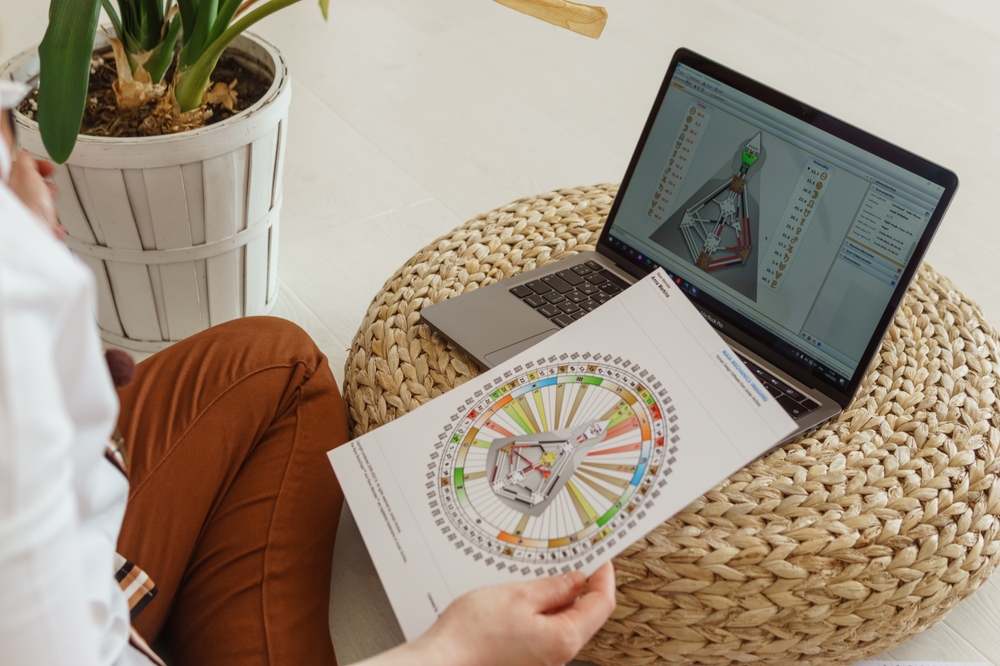 Human Design can offer valuable insights into your energetic makeup and life path. Still, as with any philosophy of life, it can create skepticism and hesitation in people to fully embrace it.
Human Design can offer valuable insights into your energetic makeup and life path. Still, as with any philosophy of life, it can create skepticism and hesitation in people to fully embrace it.
One source of doubt has been the fact that Human Design is a relatively new concept, and another is that the system relies on esoteric concepts such as chakras and the I Ching.
It’s important to remember, however, that any new idea will face skepticism and scrutiny and that the validity and effectiveness of Human Design can be judged by the results it produces in people’s lives. So far, many people have found Human Design valuable for personal growth and self-awareness. The system has been embraced by people from various backgrounds, including business leaders, artists, and spiritual seekers.
It’s also important to note that Human Design is not a one-size-fits-all solution and that its teachings should be taken as guidance rather than absolute truth. As with any philosophy or system of belief, it is up to you to interpret and apply the teachings in a way that resonates with your experiences and worldview.
One way to approach Human Design is to view it as a tool for self-exploration and experimentation rather than as a strict rule for life. Using Human Design as one of several personal growth and reflection tools, you can authentically incorporate its insights into your daily life.
Ultimately, the decision to embrace or reject Human Design is personal. Our only advice would be to approach the system with an open mind and a willingness to explore its potential benefits.
On a Closing Note
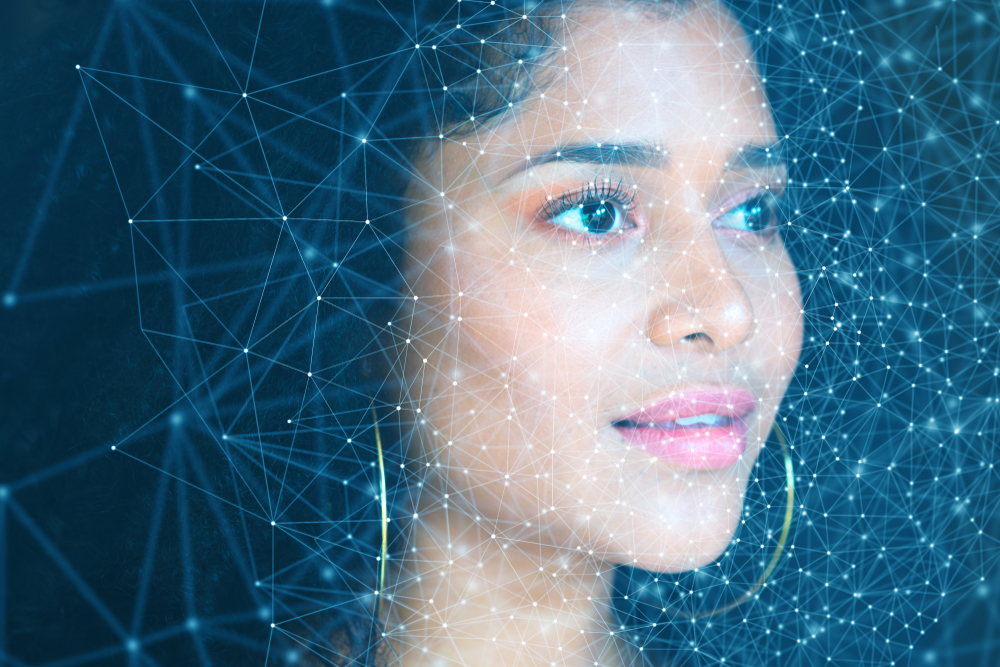 Human Design is a holistic practice that offers valuable insights into a person’s energetic makeup, life path, and purpose. It’s a unique system that combines various spiritual, scientific, and esoteric teachings and offers a detailed blueprint of everyone’s strengths, weaknesses, and natural tendencies.
Human Design is a holistic practice that offers valuable insights into a person’s energetic makeup, life path, and purpose. It’s a unique system that combines various spiritual, scientific, and esoteric teachings and offers a detailed blueprint of everyone’s strengths, weaknesses, and natural tendencies.
It’s an approach worth trying by anyone seeking self-awareness and personal growth. By understanding and living in alignment with your Human Design type, you can tap into your full potential and experience personal empowerment.
Human Design can help you make better decisions, improve communication and relationships, and create a fulfilling life based on your unique nature.
Harnessing Human Design for personal empowerment is a journey worth exploring. It can provide valuable insights and guidance to improve your relationships, career, or personal growth.
So why not try it and see where it can take you on your journey of self-discovery and personal empowerment?
DISCLAIMER: Always consult with a healthcare professional before starting any new routines, programs, or nutrition plans to ensure you receive the best medical advice and strategy for your specific individual needs.
Are you seeking to understand yourself and your place in the world? Human Design is the thing to help you out.


 By Team THOR
By Team THOR